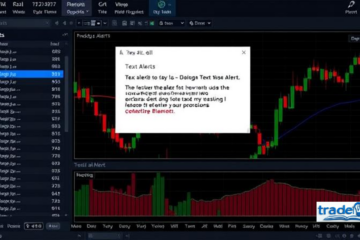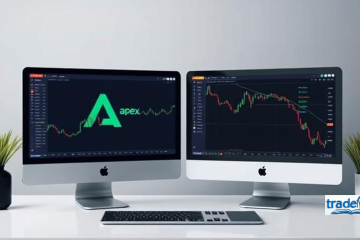The cryptocurrency and NFT (Non-Fungible Token) industries have faced significant turmoil over the past year, with a drastic decline in trading volumes and investor enthusiasm. One of the most recent casualties of this downturn is Bybit, a popular crypto exchange, which has announced the closure of its NFT marketplace. The decision comes as the NFT industry experiences a staggering 95% drop in trading volume, raising questions about the future of digital collectibles and blockchain-based assets. This article delves deep into Bybit’s decision, the broader market implications, and what lies ahead for NFTs. ybit Shuts Down NFT Marketplace as Industry Trading Volume Plummets 95%
The Rise and Fall of Bybit’s NFT Marketplace
Bybit, known for its crypto trading platform, launched its NFT marketplace in January 2022, during the height of the NFT boom. The exchange sought to capitalize on the growing interest in digital collectibles, play-to-earn gaming assets, and metaverse tokens. However, as the hype surrounding NFTs waned, trading volumes on Bybit’s marketplace declined drastically. Bybit Shuts Down NFT Marketplace
Why Bybit Entered the NFT Market
Bybit’s move into NFTs was driven by several factors:
- Market Hype – 2021 saw explosive growth in NFT sales, with major collections like Bored Ape Yacht Club (BAYC) and CryptoPunks fetching millions of dollars.
- Diversification Strategy – Bybit aimed to expand beyond crypto trading and offer users a broader range of investment opportunities.
- Competition with Other Exchanges – Rival platforms like Binance, Coinbase, and FTX had launched their own NFT marketplaces, pushing Bybit to enter the fray.
Challenges Faced by Bybit’s NFT Marketplace
Despite initial enthusiasm, Bybit’s NFT marketplace struggled due to:
- Declining Market Interest – The NFT frenzy cooled down in mid-2022 as retail investors exited.
- Regulatory Uncertainty – Governments worldwide began scrutinizing NFTs and imposing stricter regulations.
- Scams and Fraud – The NFT space became rife with rug pulls, fake collections, and hacked accounts, reducing investor trust.
NFT Trading Volume Plummets 95%: What Happened?
One of the primary reasons for Bybit’s decision to shut down its NFT marketplace is the dramatic decline in industry-wide trading volume. At its peak in early 2022, monthly NFT trading volume exceeded $16 billion. However, by 2023, this number had plummeted to under $1 billion—a shocking 95% drop.
Reasons Behind the Decline
- Economic Downturn and Crypto Winter
- The broader cryptocurrency market suffered from the collapse of major players like Terra (LUNA), FTX, and Celsius.
- Rising interest rates and inflation led investors to flee speculative assets.
- Lack of Utility in NFTs
- Many NFT projects failed to deliver promised utility or long-term value.
- The speculative nature of NFT investments led to a boom-and-bust cycle.
- Oversaturation of the Market
- An explosion of NFT projects created an oversupply, diluting the value of individual collections.
- Copycat projects and uninspired art flooded the market, reducing interest.
- Regulatory Crackdowns
- Governments in the U.S., Europe, and Asia introduced strict anti-money laundering (AML) and securities regulations for NFTs.
- Increased scrutiny discouraged institutional investors from entering the space.
- Security Issues and Scams
- High-profile NFT hacks, phishing attacks, and fraudulent projects tarnished the industry’s reputation.
- The lack of regulation made it easy for bad actors to exploit inexperienced investors.
What Bybit’s Shutdown Means for the NFT Industry
Bybit’s closure of its NFT marketplace serves as a warning sign for the industry. It highlights the need for:
- Sustainable Business Models – Platforms must move beyond hype-driven speculation and offer real value to users.
- Enhanced Security Measures – Protecting users from scams and fraud is critical to rebuilding trust.
- Regulatory Compliance – NFT projects and marketplaces must adapt to evolving legal frameworks.
- Utility-Based NFTs – The focus should shift toward NFTs with real-world applications in gaming, finance, and entertainment.
The Future of NFTs: Can the Market Recover?
Despite the downturn, experts believe NFTs are not dead. Instead, the market is undergoing a necessary correction. Here are some potential trends that could shape the future:
1. Integration with Real-World Assets
NFTs could evolve beyond digital art and collectibles to represent real-world assets like real estate, luxury goods, and financial instruments.
2. Expansion of Gaming NFTs
Play-to-earn (P2E) games and metaverse projects could reignite interest in NFTs by offering tangible in-game benefits.
3. Increased Adoption in Music and Entertainment
Artists and musicians are exploring NFTs for ticketing, fan engagement, and royalty distribution.
4. Institutional and Enterprise Adoption
Major corporations and financial institutions are experimenting with blockchain-based assets, which could drive mainstream adoption of NFTs.
Conclusion
Bybit’s decision to shut down its NFT marketplace is a symptom of broader industry challenges. The sharp decline in NFT trading volume reflects shifting investor sentiment, economic uncertainty, and an oversaturated market. However, the underlying technology behind NFTs still holds potential for various industries. Moving forward, the NFT space must innovate, prioritize security, and offer real-world utility to regain credibility and long-term sustainability.




